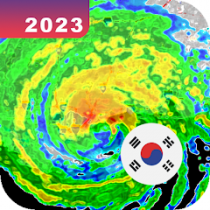Description of 강수량 레이더, 초단기 강수예측 기상청 내일 날씨 예보
강수량 레이더, 초단기 강수예측 기상청 내일 날씨 예보 APK MOD (UNLOCK/Unlimited Money) DownloadPrecipitation radar can check the amount of precipitation using real-time precipitation radar image information that can be used for precipitation forecasting.
You can check the precipitation as a weather forecast and use it for agriculture.
Precipitation Radar is a precipitation radar image, so you can easily check the weather forecast for the area (si, Gun-gu).
Weather forecast radar Real-time precipitation radar image information is provided on the map.
You can check the weather forecast information such as weekly weather and detailed forecast for each city, county, and dong in each area.
The precipitation radar can also determine the amount of precipitation (color-coded) in the image.
Information provided
– Precipitation radar image
– precipitation
– Weekly weather forecast and medium-term forecast for the region (Gunsi, Gungu-dong)
– Imjingang, Biseulsan, Sobaeksan, Mohusan, Seodaesan synthetic radar
– Provides radar information every 5-10 minutes
– Easy confirmation by moving radar information by hour.
– Self-location can be checked.
– Precipitation can be predicted by checking the precipitation radar information of the correct area.
radar observatory
– Image data provided by the Korea Meteorological Administration is used by synthesizing images of a total of 10 commercial weather radars and Incheon Airport weather radars operated by the Korea Meteorological Administration.
Radar Observation Principle (Double Polarization Radar)
– Radar transmitter emits radio waves into the air and the speed, direction, and strength of the precipitation signal returned after it collides with rain, snow, or hail is displayed as a radar image.
Image data synthesis method
– The Korea Meteorological Administration uses the maximum value synthesis method, which expresses the largest reflectivity value among various weather radar data observed at a point. In the figure below, the left circle is the observation range of the Jindo weather radar and the right circle is the observation range of the Gudeoksan weather radar. The data observed by each weather radar overlap in Jeolla-do and Gyeongnam regions. If it is assumed that the value observed at Jindo is larger than the value of Mt. Gudeok, the value observed by the Jindo weather radar is displayed in the area where the data of two weather radars overlap.
Lightning observation
– Lightning is a sudden electrical discharge phenomenon that occurs mainly when there is a thunderstorm. Discharges in the atmosphere are divided into large discharges between clouds and the ground, intercloud discharges between clouds and clouds, and cloud discharges within clouds. Lightning strikes typically carry charges that can reach millions of volts, so they can be very damaging. Lightning information provided by the Korea Meteorological Administration is displayed on the map and provided.
○ Meteorological Administration’s lightning monitoring equipment observation network: 21 locations (Based on September 30, 2020)
– Operating in 21 locations nationwide: Ganseong, Baengnyeongdo, Chuncheon, Paju, Daegwallyeong, Ulleungdo, Incheon, Uljin, Chungju, Seohae Base, Boryeong, Chupungryeong, Pohang, Geochang, Gochang, Busan, Yeosu, Heuksando, Wando, Jeju , Seogwipo
satellite image
– Satellite imagery provides satellite images of the Korean Peninsula and Asia region of Chollian 2A using data from the Korea Meteorological Administration.
– The Chollian Satellite 2A (GEO-KOMPSAT-2A: GK2A) observes the global area at 10-minute intervals, and observes the surrounding area on the Korean Peninsula at 2-minute intervals, so it can monitor and prepare for meteorological disasters faster than the Chollian Satellite. Launched on December 5, 2018, Chollian Satellite 2A was equipped with world-class weather sensors along with Japanese and American satellites. Accordingly, the number of bands was improved from 5 to 16 in the visible to infrared wavelength band, and the spatial resolution was improved 4 times from 4 km to 2 km for the infrared band and from 1 km to 500 m for the visible band, and the observation period was 15 based on the Korean Peninsula. From 1 minute to 2 minutes, the performance is greatly improved compared to the Chollian Satellite 1. From the high-resolution observation data of Chollian Satellite 2A, the analysis of the central location of the typhoon has become more accurate, and the movement path of the typhoon can be tracked effectively, and the development of localized heavy rain can be detected early by shortening the observation time. In particular, as the earth can be observed in natural colors, it is now possible to provide images that can distinguish clouds, forest fire smoke, and yellow dust with the naked eye without any other analysis technology. (Source: Weather Nuri, Korea Meteorological Administration)
Ultra-short-term forecast information
-The ultra-short-term precipitation forecast data are forecast data based on the KLFS model data.
– Expression area N30~44, E118~134
– Precipitation prediction data for 6 hours at intervals of 10 minutes.
Information source: Meteorological Radar Center, Korea Meteorological Administration
com.teamhj.agriweather
App Information of 강수량 레이더, 초단기 강수예측 기상청 내일 날씨 예보
| App Name | 강수량 레이더, 초단기 강수예측 기상청 내일 날씨 예보 v |
|---|---|
| Genre | Apps, Weather |
| Size | |
| Latest Version | |
| Get it On |  |
| Update | 2022-09-29T00:00:00.000Z |
| Package Name | com.teamhj.agriweather |
| Rating | |
| Installs | 100K+ |






